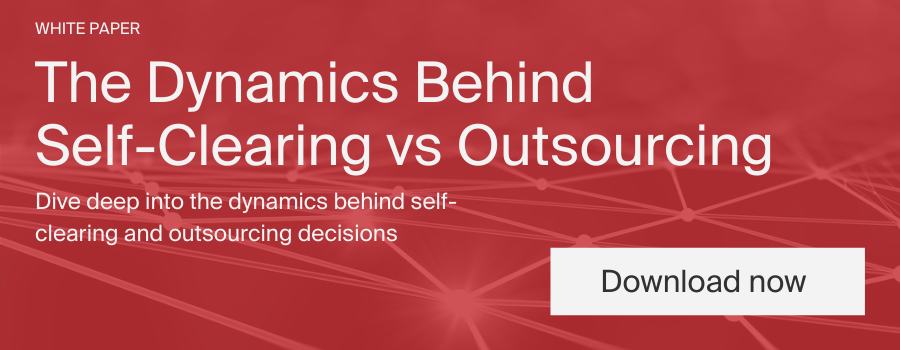
In Asia Pacific (APAC) more than any other region, service quality will determine the depth and longevity of relationships between banks and clients in the near term. Sell-side firms in APAC are still building regional brands and expanding their product offerings. Their institutional customers are finding their comfort zone in terms of risk. Those two very dynamic elements create the potential for winning greater business from, and deepening ties with, the client.
There are fewer buy-side institutions than there were 18 months ago, following a period of consolidation in Hong Kong, Singapore, Japan and Australia. A securities house or bank must ensure its value proposition is strong, supporting clients cross-asset, throughout the region, with a consistent and solid service.
Service is about discretion. In one sense of the word, that refers to security of client information. In another sense, it is ensuring that the client sees only the results they expect from service, and not the processes that deliver it under the covers.
The reliability and efficiency of processes are what enable smooth delivery, and it is these that build confidence between the bank and its client base. While on a local basis this is possible in APAC, its fragmented regulatory landscape often makes it appear more difficult to run a single, regional back office than in other geographies.
However, many of those barriers are a legacy of outdated ways of working and processes. These create outdated expectations of middle and back office performance. In fact the siloes that exist in individual countries can be brought together operationally through a single system. Here are three myths that need debunking for a firm to deliver better service.
1. BACK OFFICE SYSTEMS ARE BIG AND SINGLE ASSET CLASS
Banks have been conditioned to think this by historical providers who have always provided monolithic solutions in verticals.
The first issue is that of size. A modular approach reduces the size of a system, it reduces the time to implement or change it, and reduces operational risk around it, because change does not involve swapping one entire infrastructure for another infrastructure. Fear around the scale of change stops a lot of projects at the first hurdle.
In fact, a modular model allows a business to solve more urgent business problems, and then build up a future-proof infrastructure that can reach the front, middle and back office.
The second issue is one of functionality. Multi-asset class, multi-currency platforms that work from trade capture to settlement and support functions like client custody reporting are in use by sell-side firms today. They enable incremental change, but do not sustain silos, because the integration of components over time builds a single flexible system that can deliver a single view of risk and a lower total cost of ownership, while aintaining
the reliability and quality of service at the front end.
2. DATA CANNOT MOVE
Governments are rightly concerned about data protection and in some cases determine that data must not leave national borders or it may be at risk. Where the US and Europe enjoy common data protection legislation, APAC lacks a single rule book. As a result the movement of data around the region is often more challenging.
A solution to this is the encryption of data, which can ensure that it is only visible to authorised individuals. Encryption can support data protection rules beyond basic entity group user permissioning, and enable a wider middle- and back-office function to provide processing across the APAC region.
Having encryption capabilities around data enables an entity to use a single data repository to support much of the activity for both onshore and offshore clients in a single instance and then use in country tools to handle local taxation, accounting standards, and regulatory reporting activity.
This enables a bank to mutualise certain functions, support in-country processes, but access all of that functionality in a single system, as opposed to possibly having dozens of systems across Asia.
3. CLIENTS WILL ACCEPT HISTORIC LEVELS OF SERVICE
Banks cannot offer a single siloed product set and expect to get the same level of wallet share for a longstanding client. The buy side wants to be serviced in a different way, and that is driving price and cost, but it is also driving the services banks need to offer.
These elements cross over. Giving the client a consolidated view across assets makes sense from a margining perspective. Without it they will be asked to post more capital to one bank, and with current pressure on margins across the buy- and sell-side, that will hurt the relationship.
By contrast, the ability to net across securities and cash on a client custody basis, making sure that the firm is effectively using the client’s portfolio in their favour, will also work in the bank’s favour because it will be able to engage in more activity and capture a larger shar of commissions.
Offering existing and new clients the products they need, at a viable price point can be achieved by building an effective, economical service model. That will help sell-side firms to win business, and grow a sustainable enterprise.
CONCLUSION
Middle- and back-office systems are the backbone of client service, and that service is of increasing importance to banks in Asia Pacific. Although there have been historical barriers to developing a single, mutualised architecture for the region, those barriers are falling. At the same time, very real improvements in customer service can be achieved through engaging in a modular replacement of siloed architecture. The banks that step forward now, will maintain their relationships long in the future.
About Torstone Technology
Torstone is a leading global provider of cross-asset securities and derivatives post-trade processing technology. Torstone’s modern, award-winning Inferno platform is fast, flexible and future-proof. It enables global financial firms to reduce their costs, achieve greater control, minimise risk, and drive operational efficiency. Combining many decades of investment banking expertise with in-depth global financial market and technology industry knowledge, Torstone offers agile, secure, scalable, and cost-effective solutions.





